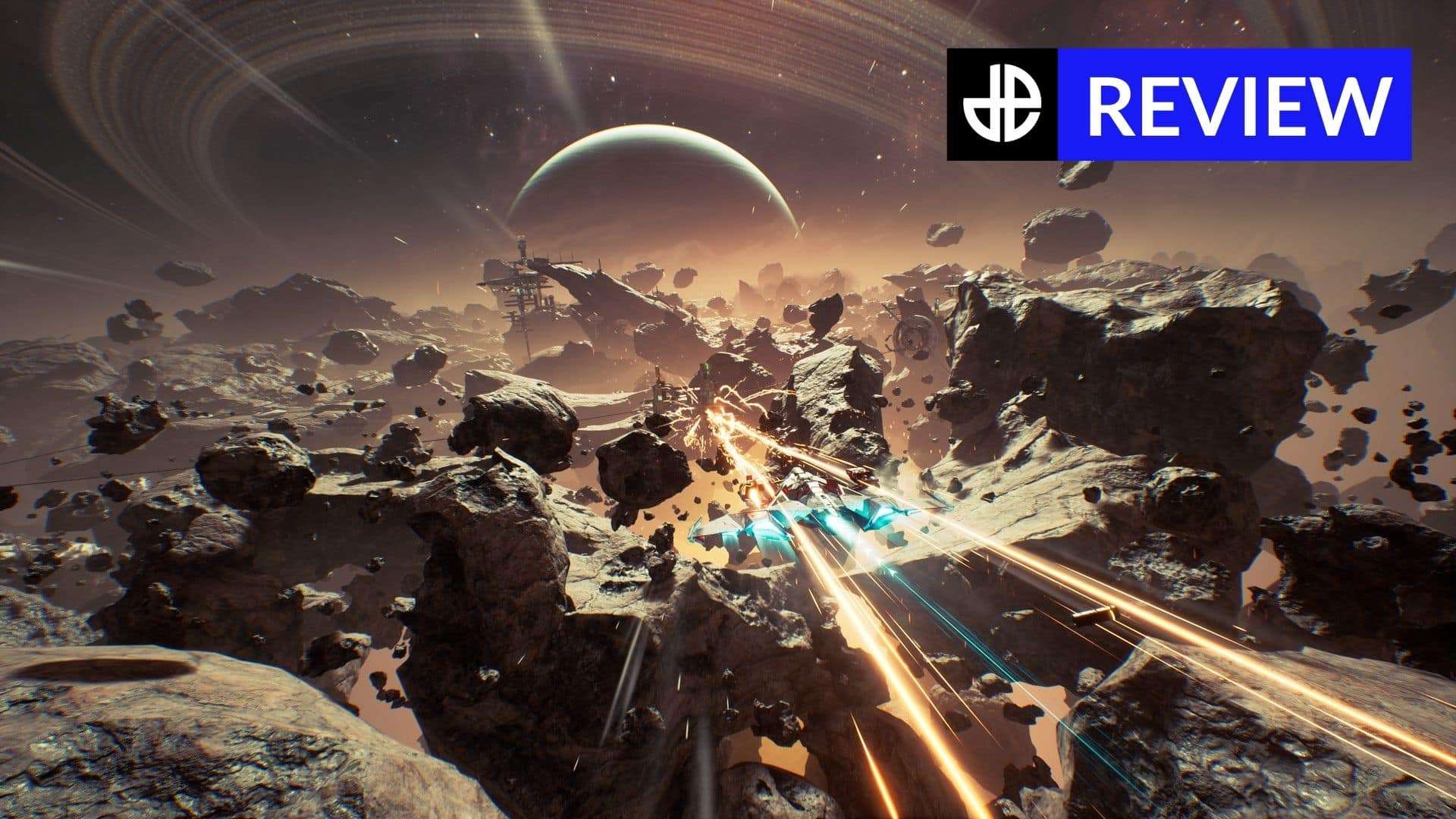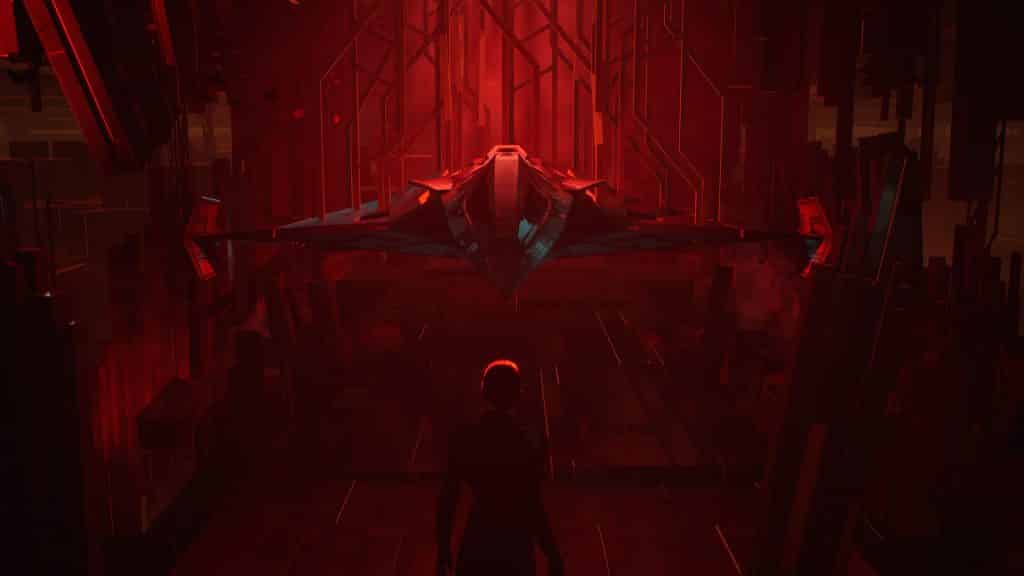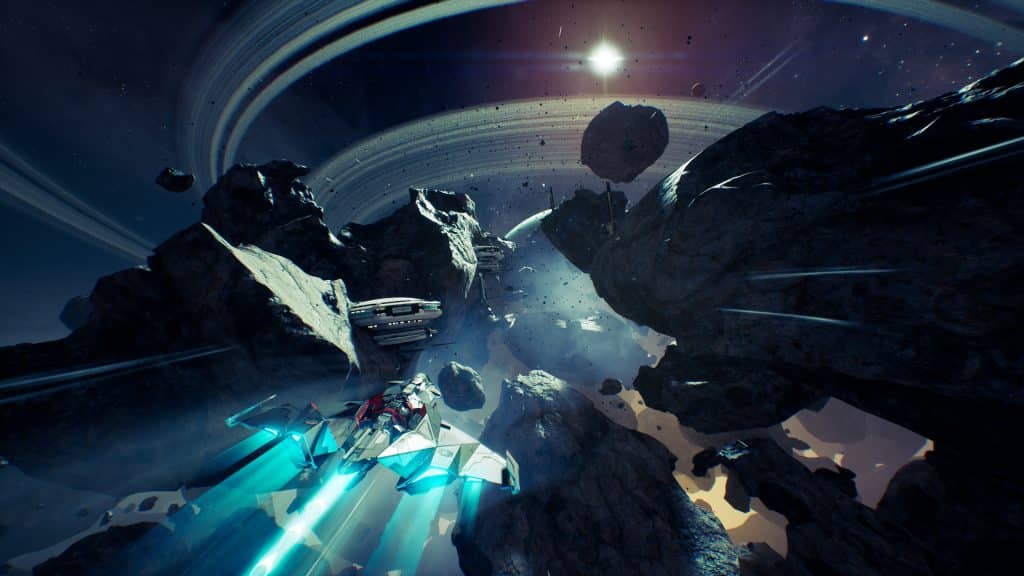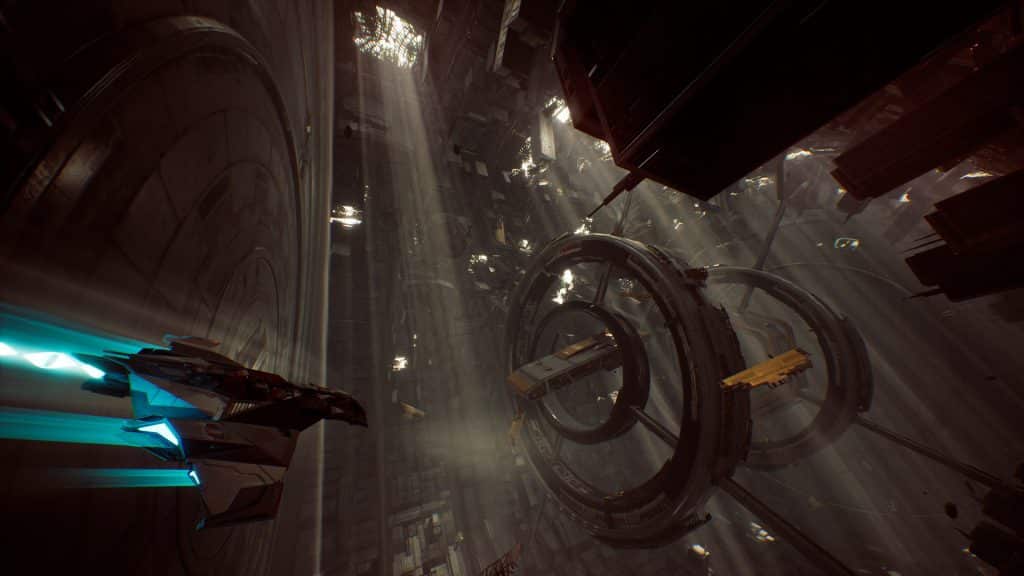Chorus review – Fun space shooter but lacks star power
 Fishlabs
FishlabsDespite a slow start, Chorus grows into a fun space shooter – albeit one that’s unlikely to live long in the memory.
Ever since the first Star Wars movie back in 1978, millions have dreamed of being an ace pilot, dogfighting with other ships against the backdrop of stars and space stations.
After a glut of games delivering on that promise in the nineties and early noughties, we’ve seen a small resurgence – with more open-ended sandboxes like Elite Dangerous and Star Citizen to the likes of Star Wars: Squadrons (and the ship-to-ship combat of Battlefront 2) in the last couple of years.
Chorus, from developer Fishlabs, is something a little different. A story-based take on the space-combat shooter, it strives to build out a dark, unsettling universe in a semi-open world structure with a customizable ship.
Chorus – Key details
- Price: $39.99 (USD) | £34.99 (GBP) | $54.95 (AUD)
- Developer: Fishlabs
- Release date: December 3, 2021
- Platforms: PlayStation 4, PlayStation 5, Xbox One, Xbox Series S|X, PC, Google Stadia
Chorus trailer
All together now
 Fishlabs
FishlabsChorus puts players in the flight suit of Nara, an exceptional pilot that’s been fighting for the bad guys, The Circle. This big, scary space cult has an affinity for mind control and wearing black, and follows the will of the Great Prophet.
After causing the destruction of an entire planet as part of the Great Prophet’s plan, Nara goes into hiding, seeking out small jobs with scavengers. Needless to say, their paths cross again, with Nara getting her sleek, sentient ship, Forsaken back in the process.
While Chorus’ story has some interesting things to say about indoctrination, it plays out in large parts through intercom chatter during missions. That makes it feel predominantly like a vehicle for getting Nara in all sorts of space battles in cool locales, and that’s fine because Chorus is a good-looking game.
With the kind of lens flare effects that’ll make JJ Abrams blush, its universe is a mix of kit-bashed scavenger ships and settlements and huge, industrial-looking ships that Nara and Forsaken can fly through.
 Fishlabs
FishlabsThere are several “hubs” packed with side mission opportunities for Nara. These optional quests range from escorting larger ships to safety, to collecting items, to clearing out enemies, and while none of it breaks the mold, it’s a nice pallet cleanser from hearing Nara talk.
And Nara talks a lot. While I certainly grew accustomed to her hushed inner monologue, it does take some getting used to during the game’s first act.
Stay on target
 Fishlabs
FishlabsIn fact, that first act doesn’t leave the best impression. Nara’s chattiness with herself, and her dour disposition aside, Nara’s starting ship lacks the exciting features of Forsaken, and cumbersome waypoints can make flitting between side quests a chore.
Still, after The Circle makes its grand reappearance, the exposition-laden dialogue soon falls away as Nara and her ship do what they do best – blow things up.
Nara is able to channel supernatural power into Rites, which manifest in-game as abilities that can be triggered. The first, for example, will help identify points of interest – helpful in the game’s early stages, but not the most exciting.
With time, though, Nara can jump to a target, summon a storm, or even fling enemy ships with her mind. It’s a gradual build, but one that feels like a genuine power climb that you don’t see in the more numbers-based ship upgrade system, or in genre contemporaries.
Aside from Rites, Forsaken also packs a trio of weapons. Fast-firing Gatling guns struggle against shields and can overheat, while slower-charging lasers rip through shields and missiles deal big damage but require keen aim. It’s a solid trifecta, and Forsaken’s offensive and defensive capabilities can be strengthened.
The ship is also incredibly nimble, able to flit between debris and asteroids with ease. While it’s easy to control, it can feel a little slow at first because players are able to stop so quickly and change direction – closer to Everspace 2 than X-Wing or TIE Fighter. With time, though, dogfights grow into more dynamic affairs, feeling less like a third-person shooter and more like a truly open space fighter on multiple axes, and many intricately designed areas make good use of the ship’s ability to turn on a dime.
On the subject of perspective, though, we’re sad to say there’s no first-person support in Chorus. While there’s the potential for this to come down the line, space combat purists may feel a little disappointed.
Rating: 7/10
Chorus has a slow start as it tries to set out its grand vision of a universe fighting mass indoctrination, while also reckoning with the very base of its power climb. That can make the early couple of hours feel pedestrian.
Stick with it, though, and there’s fun to be had in throwing enemy ships like paper airplanes and careening through the bellies of huge ships – even if the overall narrative feels largely forgettable.
Reviewed on Xbox Series X